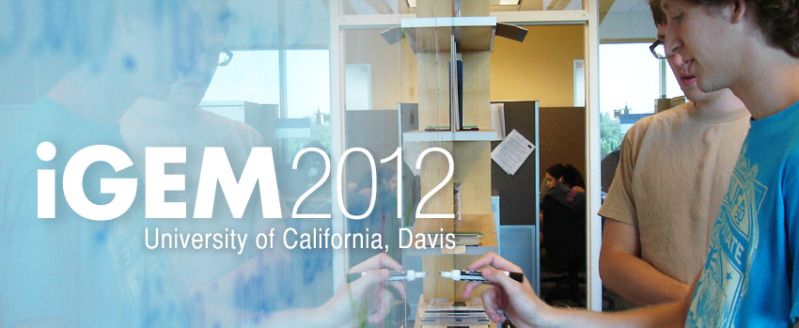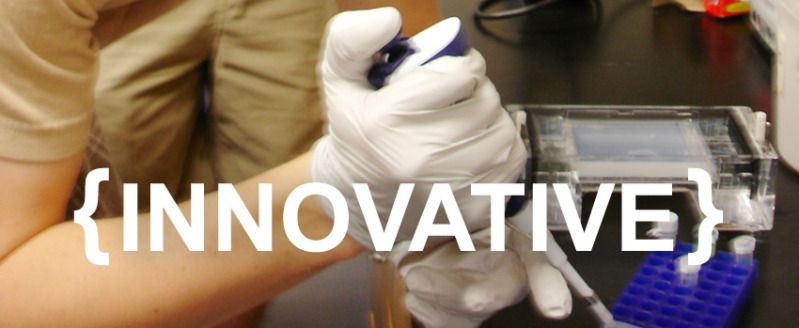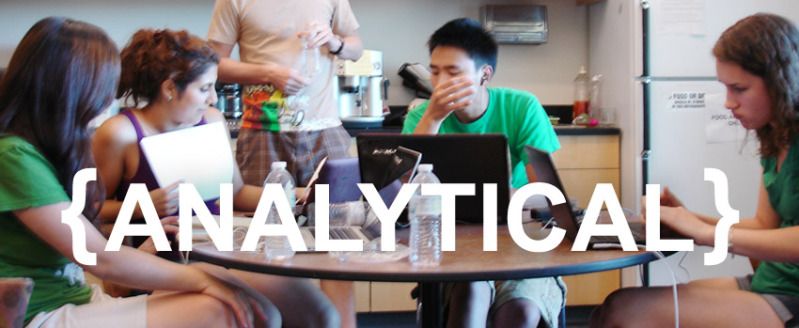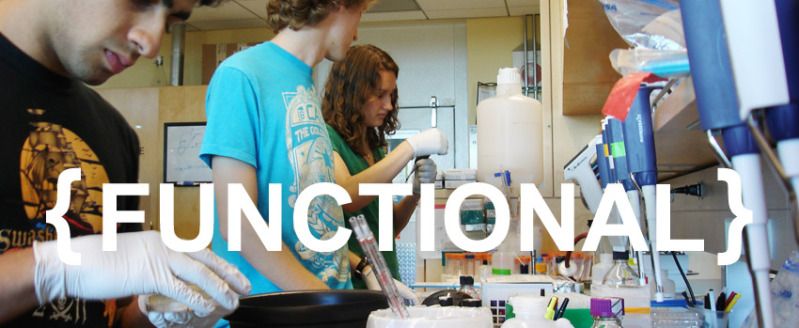Team:UC Davis
From 2012.igem.org
(Difference between revisions)
| Line 80: | Line 80: | ||
<link rel="stylesheet" type="text/css" href="https://2012.igem.org/forum/forum_styles.css" /> | <link rel="stylesheet" type="text/css" href="https://2012.igem.org/forum/forum_styles.css" /> | ||
<script type="text/javascript" src ="https://2012.igem.org/forum/forum_scripts.js"></script> | <script type="text/javascript" src ="https://2012.igem.org/forum/forum_scripts.js"></script> | ||
| + | <!-- slide script starts here --> | ||
| + | <script type="text/javascript"> | ||
| + | function slider() { | ||
| + | var $current = $('#slides IMG.current'); | ||
| + | if ( $current.length == 0 ) $current = $('#slides IMG:last'); | ||
| + | |||
| + | var $next = $current.next().length ? $current.next() | ||
| + | : $('#slides IMG:first'); | ||
| + | |||
| + | var $n_sibs = $current.siblings(); | ||
| + | var rndNum = Math.floor(Math.random() * $n_sibs.length ); | ||
| + | var $next = $( $n_sibs[ rndNum ] ); | ||
| + | |||
| + | $current.addClass('previous'); | ||
| + | |||
| + | $next.css({opacity: 0.0}) | ||
| + | .addClass('current') | ||
| + | .animate({opacity: 1.0}, 2500, function() { | ||
| + | $current.removeClass('current previous'); | ||
| + | }); | ||
| + | } | ||
| + | $(function() { | ||
| + | setInterval( "slider()", 5000 ); | ||
| + | }); | ||
| + | |||
| + | </script> | ||
| + | |||
| + | <!-- slide script ends here --> | ||
<style type="text/css"> | <style type="text/css"> | ||
<!-- beginning of slider style --> | <!-- beginning of slider style --> | ||
| Line 250: | Line 278: | ||
} | } | ||
#newnavi .newmenu li:hover ul { | #newnavi .newmenu li:hover ul { | ||
| - | left:0px; top:23px; background:lavender; width:103px; opacity:0.7; z-index: | + | left:0px; top:23px; background:lavender; width:103px; opacity:0.7; z-index:4; |
} | } | ||
#newnavi .newmenu li:hover ul li { | #newnavi .newmenu li:hover ul li { | ||
| Line 263: | Line 291: | ||
#newnavi .newmenu li:hover ul li a:hover { | #newnavi .newmenu li:hover ul li a:hover { | ||
height:18px; background:silver; color:#000; border:solid 0px #444; | height:18px; background:silver; color:#000; border:solid 0px #444; | ||
| + | } | ||
| + | /* slide starts here */ | ||
| + | #slides { | ||
| + | position:relative; | ||
| + | height:350px; | ||
| + | width: 840px | ||
| + | |||
} | } | ||
| + | #slides IMG { | ||
| + | position:absolute; | ||
| + | opacity:0.0; | ||
| + | top:0px; | ||
| + | left:0px; | ||
| + | z-index:1; | ||
| + | } | ||
| + | |||
| + | #slides .current { | ||
| + | z-index:3; | ||
| + | opacity:1.0; | ||
| + | } | ||
| + | |||
| + | #slides .previous { | ||
| + | z-index:2; | ||
| + | } | ||
| + | /* slide ends here */ | ||
.floatbox3 | .floatbox3 | ||
{ | { | ||
| Line 352: | Line 404: | ||
<li ><a href="https://2012.igem.org/Team:UC_Davis/Attributions" title="Attributions">Attributions</a></li> | <li ><a href="https://2012.igem.org/Team:UC_Davis/Attributions" title="Attributions">Attributions</a></li> | ||
| - | <li | + | <li ><a href="https://2012.igem.org/Team:UC_Davis/Data" title="Data">Data</a> |
<ul> | <ul> | ||
<li ><a href="./Data.htm ">Data 1</a></li> | <li ><a href="./Data.htm ">Data 1</a></li> | ||
| Line 361: | Line 413: | ||
<li ><a href="https://2012.igem.org/Team:UC_Davis/Notebook" title="Notebook">Notebook</a> | <li ><a href="https://2012.igem.org/Team:UC_Davis/Notebook" title="Notebook">Notebook</a> | ||
<ul> | <ul> | ||
| - | <li ><a href=" | + | <li ><a href="Notebook.htm ">Week 1</a></li> |
| - | <li ><a href=" | + | <li ><a href="Notebook.htm ">Week 2</a></li> |
| - | <li ><a href=" | + | <li ><a href="Notebook.htm ">Week 3</a></li> |
</ul> | </ul> | ||
</li> | </li> | ||
| Line 371: | Line 423: | ||
<li ><a href="https://2012.igem.org/Team:UC_Davis/Project" title="Project">Project</a></li> | <li ><a href="https://2012.igem.org/Team:UC_Davis/Project" title="Project">Project</a></li> | ||
<li ><a href="https://2012.igem.org/Team:UC_Davis/Team" title="Team">Team</a></li> | <li ><a href="https://2012.igem.org/Team:UC_Davis/Team" title="Team">Team</a></li> | ||
| - | <li ><a href="https://2012.igem.org/Team:UC_Davis/Home" title="Home">Home</a></li> | + | <li class="selected"><a href="https://2012.igem.org/Team:UC_Davis/Home" title="Home">Home</a></li> |
</ul> | </ul> | ||
</div> | </div> | ||
| + | <!-- slide show starts here --> | ||
| + | <div id="slides"> | ||
| + | |||
| + | <img src="http://img.photobucket.com/albums/v26/bluemelon/slide-1-1.jpg" width="850" height="349" alt="" class="current" /> | ||
| + | <img src="http://img.photobucket.com/albums/v26/bluemelon/slide-2-1.jpg" width="850" height="349" alt="" /> | ||
| + | <img src="http://img.photobucket.com/albums/v26/bluemelon/slide-3-1.jpg" width="850" height="349" alt="" /> | ||
| + | <img src="http://img.photobucket.com/albums/v26/bluemelon/slide-4-1.jpg" width="850" height="349" alt="" /> | ||
| - | + | </div> | |
| - | < | + | <!-- slide show ends here --> |
<div id="bodyContent"> | <div id="bodyContent"> | ||
<div id="contentSub"></div> | <div id="contentSub"></div> | ||
| - | |||
<br> | <br> | ||
| + | <div class="floatbox3"> | ||
| + | <h1> Welcome </h1> | ||
| + | <p>Welcome to iGEM 2012 at UC Davis!</p> | ||
| + | This year's UC Davis team is composed of ten undergraduates, two advisors, and a graduate student. We come from different areas of study, but we're all working together on this year's synthetic biology project. Due to the global impact of plastic pollution, we have decided to focus on biodegradation of polyethylene terephthalate (PET). PET is a commonly and widely used plastic, but only a small percentage of them are recycled, meaning a majority of the trash ends up in landfills and the oceans. It is a global issue, and achieving our goal would have a big impact on the issue of plastic degradation. | ||
| + | </div> | ||
| + | |||
| + | <br> | ||
<div class="floatbox3"> | <div class="floatbox3"> | ||
| - | <h1> | + | <h1>Our Project/Abstract </h1> |
| - | + | ||
| + | <p>We hope to accomplish:</p><br> | ||
| + | This year, our team hopes to successfully insert the gene for cutinase, an | ||
| + | enzyme that has been shown to degrade polyethylene terephthalate (PET), into | ||
| + | several strains of E. coli. PET is a major kind of plastic used today, and we hope to | ||
| + | overproduce cutinase within the E. coli and secrete the enzyme into the extracellular | ||
| + | region to degrade the PET. We hope to test the cutinase out on several kinds of | ||
| + | PET, such as films from scientific companies and plastic bottles, and test how much | ||
| + | each is broken down. We also hope to improve the cutinase itself through targeted | ||
| + | mutations and codon optimization, through programs such as Foldit and SWISS- | ||
| + | MODEL.<br><br> | ||
| + | Through our research, we have learned that with cutinase, PET degrades into | ||
| + | terephthalic acid (TPA) and ethylene glycol. While TPA does not appear to be | ||
| + | harmful, ethylene glycol is a toxic substance. We hope to degrade ethylene glycol as | ||
| + | much as possible by enhancing the promoters that express the degradative enzymes | ||
| + | involved. After ethylene glycol is degraded, we hope to redirect all further | ||
| + | byproducts into glycolysis within E. coli so that the project would sustain itself. | ||
| + | We also hope to perform a complete economic and environmental analysis | ||
| + | of our project to see how feasible it would be in real life and to assess the impact it | ||
| + | could have.<br><br> | ||
| + | Lastly, we need to ensure that our parts do not have common restriction | ||
| + | sites within them so they can be used properly in the standard BioBrick format. We | ||
| + | hope to create and characterize a part family and to end up with a series of BioBrick | ||
| + | standard parts to submit to the Parts Registry. | ||
| + | <br><br> | ||
| + | <p>What We Have Done So Far:</p><br> | ||
| + | We have outlined a plan for the engineering of the PET degradation circuit | ||
| + | and we ordered a synthesized sequence for cutinase. We asked for separate strains | ||
| + | of E. coli from Yale and Barcelona.<br><br> | ||
| + | We learned basic lab protocols, such as ligation, transformation, and | ||
| + | digestion and we have worked on the Wiki.<br><br> | ||
| + | We have done extensive research on past attempts to degrade PET and other | ||
| + | plastics. We even visited our local landfill to talk about current issues with waste | ||
| + | degradation, such as control over concentrations of methane.<br><br> | ||
| + | Two of our members (Nick and Mattan) attended the Biomedical Engineering | ||
| + | Entrepreneurship Academy to be better informed about the economic implications | ||
| + | of our project, and what companies might be looking for in terms of a completed | ||
| + | product.<br><br> | ||
| + | Lastly, we’ve had team bonding, over sushi buffets, ice cream sandwiches and | ||
| + | laughs.<br> | ||
| + | |||
| + | |||
</div> | </div> | ||
Revision as of 16:57, 24 July 2012




Welcome
Welcome to iGEM 2012 at UC Davis!
This year's UC Davis team is composed of ten undergraduates, two advisors, and a graduate student. We come from different areas of study, but we're all working together on this year's synthetic biology project. Due to the global impact of plastic pollution, we have decided to focus on biodegradation of polyethylene terephthalate (PET). PET is a commonly and widely used plastic, but only a small percentage of them are recycled, meaning a majority of the trash ends up in landfills and the oceans. It is a global issue, and achieving our goal would have a big impact on the issue of plastic degradation.Our Project/Abstract
We hope to accomplish:
This year, our team hopes to successfully insert the gene for cutinase, an enzyme that has been shown to degrade polyethylene terephthalate (PET), into several strains of E. coli. PET is a major kind of plastic used today, and we hope to overproduce cutinase within the E. coli and secrete the enzyme into the extracellular region to degrade the PET. We hope to test the cutinase out on several kinds of PET, such as films from scientific companies and plastic bottles, and test how much each is broken down. We also hope to improve the cutinase itself through targeted mutations and codon optimization, through programs such as Foldit and SWISS- MODEL.
Through our research, we have learned that with cutinase, PET degrades into terephthalic acid (TPA) and ethylene glycol. While TPA does not appear to be harmful, ethylene glycol is a toxic substance. We hope to degrade ethylene glycol as much as possible by enhancing the promoters that express the degradative enzymes involved. After ethylene glycol is degraded, we hope to redirect all further byproducts into glycolysis within E. coli so that the project would sustain itself. We also hope to perform a complete economic and environmental analysis of our project to see how feasible it would be in real life and to assess the impact it could have.
Lastly, we need to ensure that our parts do not have common restriction sites within them so they can be used properly in the standard BioBrick format. We hope to create and characterize a part family and to end up with a series of BioBrick standard parts to submit to the Parts Registry.
What We Have Done So Far:
We have outlined a plan for the engineering of the PET degradation circuit and we ordered a synthesized sequence for cutinase. We asked for separate strains of E. coli from Yale and Barcelona.
We learned basic lab protocols, such as ligation, transformation, and digestion and we have worked on the Wiki.
We have done extensive research on past attempts to degrade PET and other plastics. We even visited our local landfill to talk about current issues with waste degradation, such as control over concentrations of methane.
Two of our members (Nick and Mattan) attended the Biomedical Engineering Entrepreneurship Academy to be better informed about the economic implications of our project, and what companies might be looking for in terms of a completed product.
Lastly, we’ve had team bonding, over sushi buffets, ice cream sandwiches and laughs.
 "
"